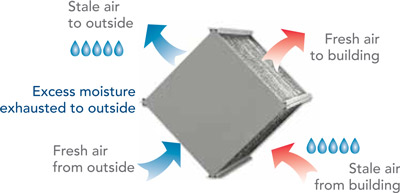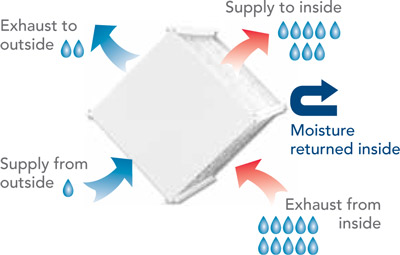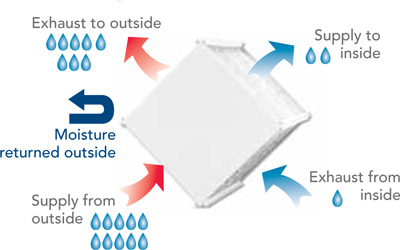Determine your ventilation needs
Depending on your home’s geographical location of your home and the building code requirements in your area, you will need to install one of the following categories of air exchanger:
A heat recovery ventilator system (HRV) or an energy recovery ventilator (ERV).
HRV – Heat Recovery Ventilator
Ideal for colder climates
In colder climates, where home heating is essential, the heat recovery ventilator (HRV) is the proper choice. The HRV keeps the home supplied with a steady flow of fresh outdoor air. As stale, warm air is expelled, the heat recovery core warms the incoming fresh, colder air before it is distributed throughout the home. The result is a constant supply of fresh air, no unpleasant drafts and greater home comfort. In addition to heat recovery and improved air quality, the HRV provides necessary ventilation while controlling excess humidity.

ERV – Energy Recovery Ventilator
Ideal for year-round ventilation
ERV’s are suitable for all climates including those with hot, humid summers, where homes are air-conditioned and possibly dehumidified during large parts of the year. As the HRV, the ERV recovers the heat in cold season, however, it also recuperates the energy trapped in moisture, which greatly improves the overall recovery efficiency. The ERV process is as follows: In humid climates and air conditioned homes, when it is more humid outside than inside, the ERV limits the amount of moisture coming into your home. In dry climates and humidified homes, when the humidity level is reversed, the ERV limits the amount of moisture expelled from your home.
Heating season

Cooling season

You can also refer to the Frequently Asked Questions section and the Advice and solutions section to learn more about HRV and ERV.


